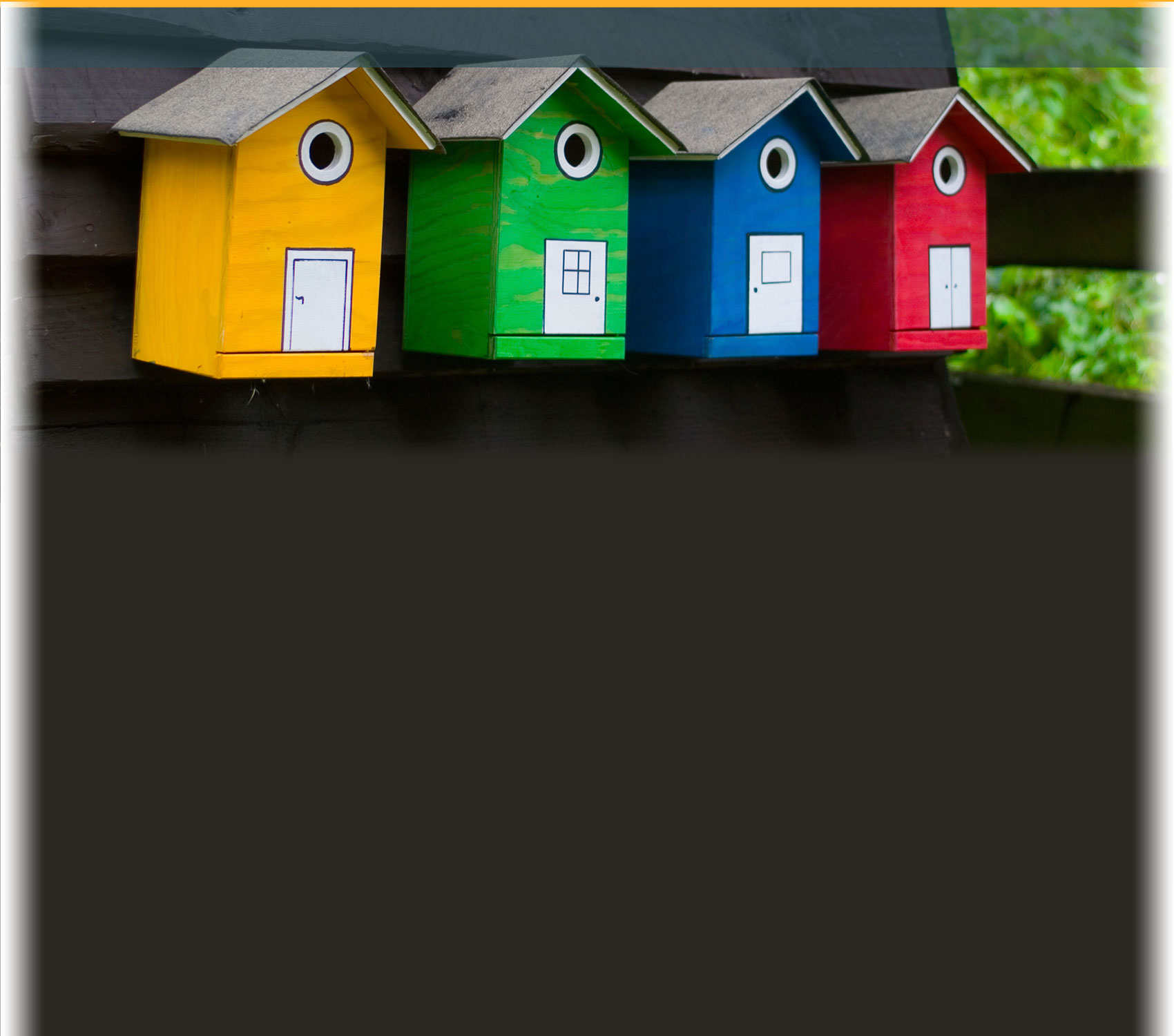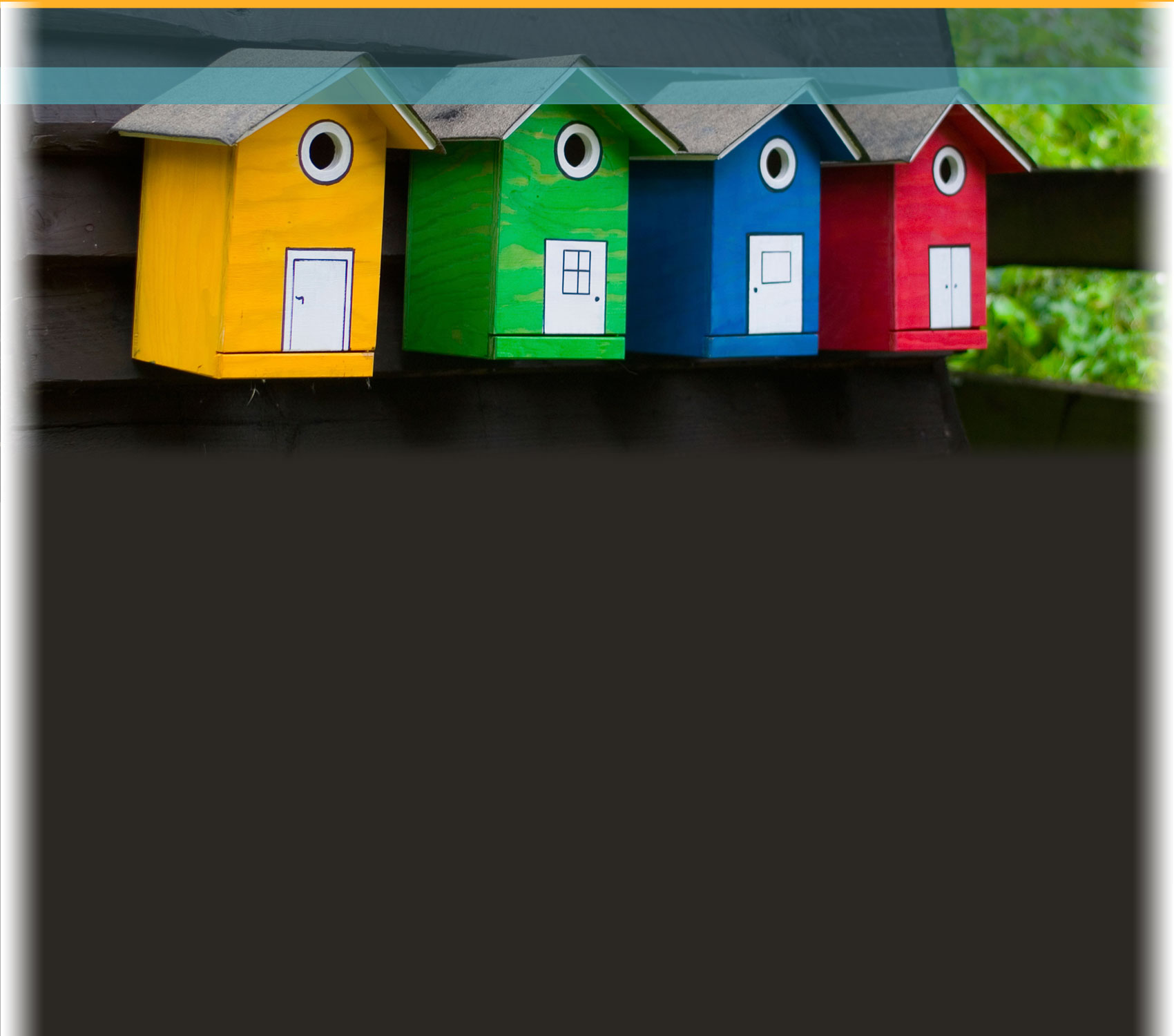Building a Nest Box (continued)
Barn Owls
Nest boxes used by barn owls look a little bit different. For one thing, they are much bigger: at least 10 inches wide and 18 inches deep, and sometimes up to 24 inches wide and 36 inches deep. The height of the box should be 15-24 inches. The entrance hole can be square or round, with at least 6 inches in diameter.
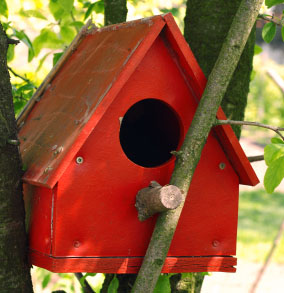
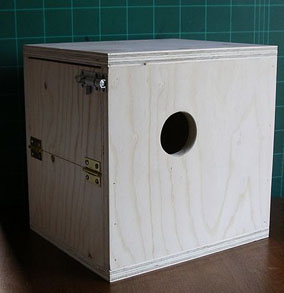
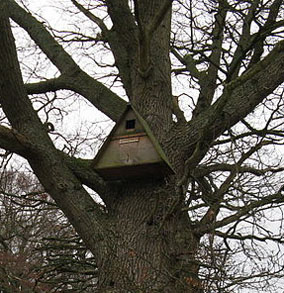
These are three different styles for a barn owl's nest box. The second image is courtesy of Snowmanradio, [CC-BY-SA 2.0], via Wikimedia Commons. The third image is courtesy of Dave Spencer, [CC-BY-SA 2.0], via Wikimedia Commons.
As with Bewick's wrens, nest boxes for barn owls should be made of three-fourths an inch untreated wood, and should include drainage and ventilation holes. Unlike with Bewick's wrens, it is okay to include a ledge or small perching area so that young owlets can roostroost. It is also not as important that the roof be pitched, since owl nest boxes are often placed inside barns or in trees, and rain is not as much of an issue. Since barn owl nest boxes are not as exposed to harsh weather, many people use less expensive plywood or pine rather than more expensive and more weather-resistant cedar or cypress.

A nest box is being installed in a pine tree.
Image courtesy of USFWS
Red-Cockaded Woodpeckers
Red-cockaded woodpeckers need a different kind of nest box than Bewick's wrens and barn owls. First of all, the dimensions are different: about 8-12 inches in height and 3-5 inches wide and deep. The nest boxes also don't need ventilation holes, drainage holes or sloped roofs. That is because they are installed by placing the nest box directly in holes that have been chiseled chiseled out of trees in order to more closely mimic natural cavities.
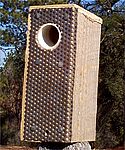
Artificial nesting cavity for a red-cockaded woodpecker.
Image courtesy of USFWS
Another important design consideration when making a nest box for a red-cockaded woodpecker is the entrance hole. It should be no larger than two inches in diameter. It should also be reinforced with a metal plate or PVC tube so that other birds and animals cannot make the hole bigger. If the hole is enlarged, red-cockaded woodpeckers will not use the nest box anymore.
Nest Box Placement
The final step in setting up a nest box is placing it in the correct spot. Bewick's wrens prefer nest boxes set on poles with predator guards in shrubby areas about 5-10 feet off the ground. Nest boxes for barn owls should be placed in a barn, among tree branches, or in another sheltered area near an open field about 12-25 feet off the ground. Nest boxes for red-cockaded woodpeckers should be nestled in longleaf pine trees about 25 feet off the ground in mature pine forests.

Shrubby Area |

Pine Tree |

Barn |

Open Field |
Once your nest box is set up, it's time to sit back, grab your binoculars, and see who moves in!
